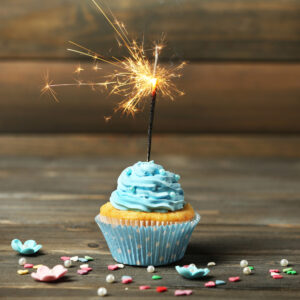Your cart is currently empty!

I think I can, I know I can…
—
by
Stay motivated & consistent with exercise

Having the right mental space for working out is equally important as the right physical space.
You can have all the specialized tools, equipment, and professional guidance, but if you don’t cultivate the right head-space for working out it’s likely you won’t follow through, or worse yet, you won’t even start your fitness journey. Often it’s the mental hurdles that can present the toughest challenges.
12 ways to help create the right mental space for exercise:
1. Atmosphere
Make sure it’s a place you actually want to be in. If the space isn’t inviting or inspiring, chances are you aren’t going spend much (if any) time there.
If you work out from home:
- Personalize the space! Incorporate elements (pictures, wall art, paint color, etc) that you find motivating or inspiring. Dial in a comfortable temperature by adding a heater or fan. Add accessory items like a portable speaker for music (if headphones aren’t your thing), a tv/computer/or phone stand to watch videos, or your favorite plants to purify the air.
- Eliminate potential distractions (kids, pets, house chores, etc).
- Declutter the space. Aside from being a potential safety hazard, a cluttered space will clutter the mind.
RELATED: 6 tips to create the home gym space– that works for YOU (click here)
2. Start
Motivation comes from doing!
Stop waiting for the “right time” to start. It’s okay to spend some time doing your research to design a health and fitness plan that’s ideal for you. However, set a firm start date, and make it a bit uncomfortably soon. Don’t wait for the “new year”, your job to settle down, after the kids go back to school, when life isn’t so busy, etc.
Prioritize yourself!
3. Set goals & intentions
“If goals describe what you hope to find at the end of the path,
intentions describe how you’d like to feel as you start walking.”- Jeff Shuck
First, focus on what you want to experience. Then, create specific, small goals and establish routines that support your intention and larger goal.
EXAMPLE:
Intention (think about WHY you are working out and what you plan to achieve): I want to be able to hike without knee pain and not be limited by the steepness of a trail.
Goal #1: Incorporate 2 days of strength training into my weekly workout schedule.
Goal #2: Hike the Mt Brown Lookout Trail before the end of the hiking season this year.
Please, don’t make weight loss your primary or only goal!

4. Identify barriers
Identify any potential barriers/obstacles that might prevent you from completing your goal(s).
How can you prevent them? Or, how will you solve these issues when they arise? The more detailed and “bulletproof” your plan is, the better you’ll be at staying consistent with your workouts. Always make a “plan B” and “plan C” (no excuses, right?!).
5. Visualize success & positive outcomes
Acknowledge that it’s ok to have some fear or trepidation when starting something new… “What if I fail?” “What if it’s not right for me?” However, don’t let those thoughts paralyze you. Instead, immediately shift to a positive mindset and visualize outcomes of success.
Imagine how you’ll feel once you achieve your goal.
6. Plan, schedule & track

Having a detailed workout plan will set you up for success by removing resistance, indecision, and potential overwhelm.
Designate a specific time and place for your workouts, and schedule them in your calendar.
If something is scheduled, it’s more likely to get done!
Tracking your workouts is a great way to keep yourself accountable. Plus, this allows you to see your progress and measure how far you’ve come. Printable log sheets, a “notes” section on your phone, or a dedicated fitness app are a few option you can try.
7. Have patience
Remind yourself that your fitness journey is not a sprint.
Fitness doesn’t just happen over night, and it really should be viewed as a life-long journey.
8. Know your motivational drivers
Each person is different, and what motivates us and our perspectives of rewards are also different.
Are you Intrinsically or extrinsically motivated?
Intrinsic motivation comes from within, while extrinsic motivation comes from external factors or incentives. When you’re intrinsically motivated, you engage in an activity because you enjoy it and get personal satisfaction from doing it (example: making meals at home because you enjoy the art and science of cooking). If you’re extrinsically motivated, you do something in order to gain a reward (example: making meals at home in order to save up money for a vacation).
I highly discourage using guilt, shame, or punishment as motivators; rather cultivate a positive mindset and visualize positive outcomes and success.
9. Rewards

Celebrate success and show your body gratitude.
Reward yourself after a challenging workout or fitness milestone (no matter how small).
Extrinsic rewards are ok— they can increase the odds of something becoming a habit, and over time the motivation becomes intrinsic and your brain will recognize that the workout itself is the reward.
However, don’t reward yourself for bad behavior (example: skipping your workout to instead watch your favorite TV show).
10. Support
Find a workout buddy, join a group fitness class, or get your family involved.
Work with a certified personal trainer or health coach that can offer professional guidance and support.
11. Recover
Allow for adequate rest and recovery. Doing so will prevent “burnout” or “overtraining”.
Get adequate sleep, and incorporate rest days/active recovery into your training schedule.
Your fitness gains don’t actually happen while you workout, they happen while you rest.
12. Have fun!
- Listen to music that gets you energized and motivated.
- “Gamify” your workouts. There are numerous apps (like Peloton and Zwift) that can make fitness more fun and engaging, especially for you extrinsically motivated types. If you’re a competitive person, it’s okay to compete against yourself and set personal challenges during your workouts (example: see if you can get one more rep than last time).
- Invite a friend or family member to join you.
- Mix up your routine. Try new exercises or activities until you find something you enjoy doing.
- Pretend you’re child again, you don’t know the word exercise, and you’re just… playing and having SO MUCH FUN!
“The body achieves what the mind believes.” -unknown

Keep this article bookmarked and use it as a resource anytime you are feeling stuck or unmotivated to workout. This is by no means a comprehensive list, so please feel free to add to the list by leaving a comment below. Let me know what you’ve found to be particularly helpful for YOU when it comes to maintaining exercise consistency and motivation.
Fitness awaits… get mentally prepared for it!
Kristen, CPT and creator of the HIKE-ABILITY Training Program

Disclaimer: All information, content, and material (including associated text, videos, and links) on this website is provided in good faith and is for informational and educational purposes only. It is not intended to serve as a substitute for the consultation, diagnosis, and/or medical treatment of a qualified physician or healthcare provider. All exercise has inherent risks. Before beginning any type of exercise, please consult your health care provider.
Comments
2 responses to “I think I can, I know I can…”
-

I completed your signup form, but couldn’t tell if it was accepted. Hope I didn’t submit multiple requests.
-

Hi Debbie! I sent you an email letting you know we received your signup request. I also included the link for the ebook incase you didn’t receive that. Thanks for your interest in hiking fitness!
-




Leave a Reply